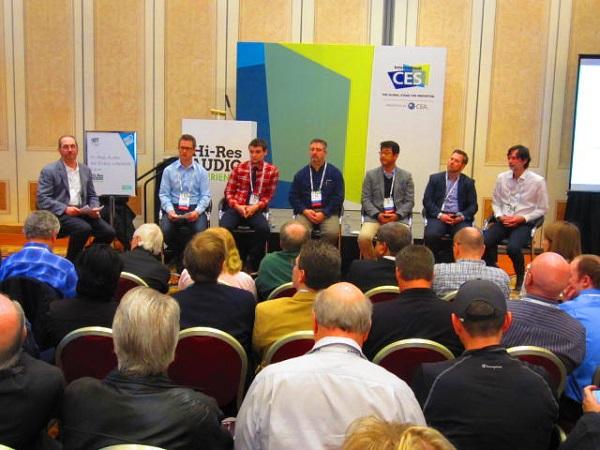Welcome to the Hi-Res Music World, Part Three: Retailers
The moderator was industry veteran Joe Palenchar, senior editor at TWICE. The panelists were: Steve Silberman, VP, Development, AudioQuest; David J. Steven, managing director, dCS Ltd.; Paul Wasek, national marketing and product planning manager, Onkyo USA; Owen Kwon, VP, business development, iRiver Inc.; Aaron Levine, product marketing manager, Sony Electronics; and Michal Jurewicz, president, Mytek Digital.
First up: Should hi-res be closely defined, or should it embrace an array of (incompatible) file formats? Most of the panelists agreed that being agnostic on formats is key. As long as the signal is hi-res, smart companies shouldn't care what the delivery method is. Another advantage is that by allowing different formats, it will let the marketplace decide which one it may ultimately want. That being said, the format diversity makes it much more difficult for companies to service customers; everything from different signal processing to different licenses must be dealt with.
Second issue: Is the complexity of the task its own worst enemy? For example, how can we simplify ways to move files around in a home playback system? Panelists commented that the goal is home networks (wired or wireless) that allow transfer of many kinds of hi-res files. But will that require overly complex networks that may be beyond the savvy of most consumers? For example, what if the consumer has to install proprietary drivers? Would technologies such as DLNA work, or is a new "from scratch" method required?
Third question: How are retailers handing hi-res? For now, there is a cone of silence on the street. More work is needed to develop retailer awareness. As simple as it seems, for example, hi-res may need an identifying logo. Also, for example, hi-res needs a promotional committee to coordinate its growth. Education is critical. Hi-res is a decade old, but its activities must be coordinated, and its evolution pathway defined. Should both high-end retailers and big-box stores be brought into the fold? Or it a high-end market only? To that end, some high-end players are locked in older paradigms such as stereo-only. That needs to be addressed. Note also that some big-box stores are actually quite adept at selling high-end A/V.
Other issues: Witness the positive evolution from earbuds to headphones - proof that sound quality (and fashion too) matters. Hi-res isn't like any audio format that came before it; it can be hard to get your arms around it, so retailers need new approaches that recognize that. For example, the panel commented that demos are powerful. Note that much existing gear, such as AV receivers, already support some hi-res formats; a little education can quickly unlock that capability. A contrary view: Maybe there's no need for products specifically tagged as "hi-res;" natural evolution of technology, for example, more sophisticated home networks, might naturally bring higher levels of audio playback without overly complicating the issue.
Bottom line: As with the other panels, this panel sees as hi-res as a long road, but one with a potentially very rewarding destination. The journey will require cooperation between hardware manufacturers and download stores, but there's ample precedence for that. With hard work and patience, hi-res may finally deliver audio's holy grail.









































